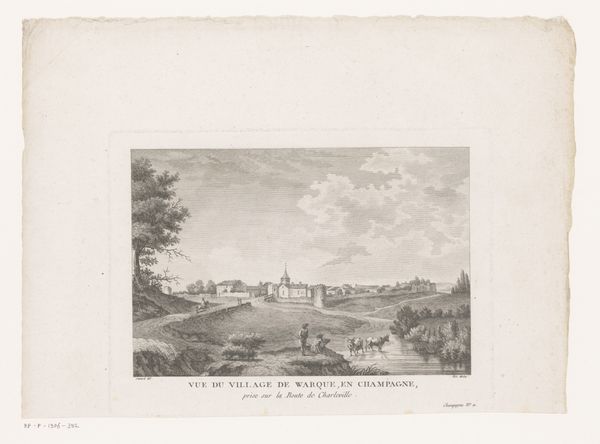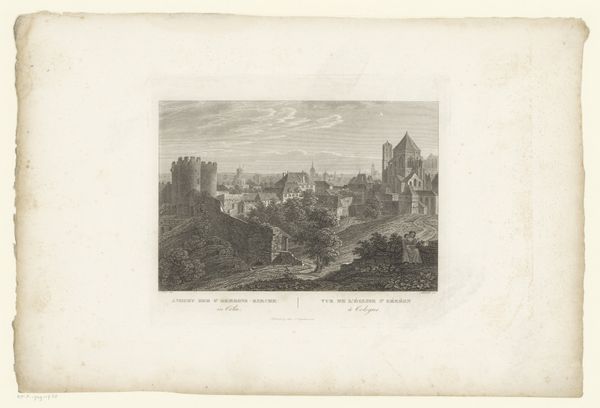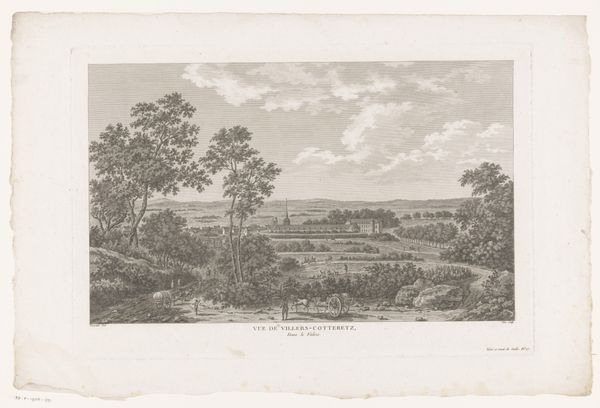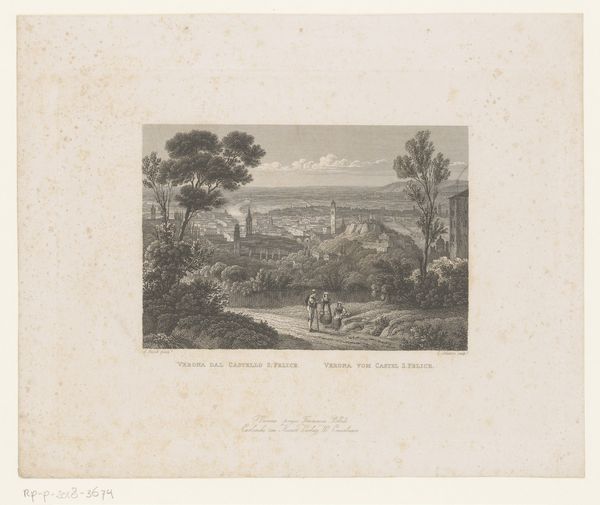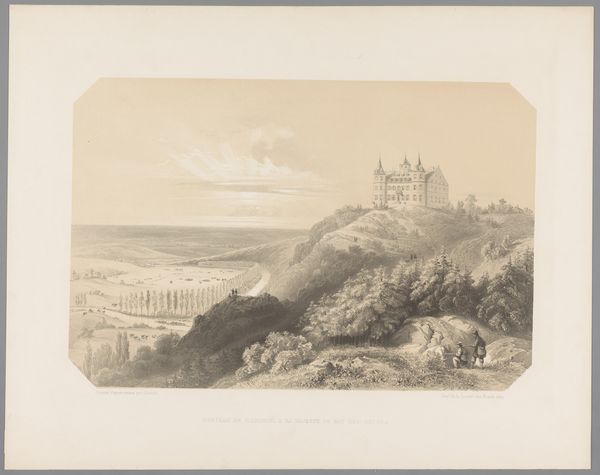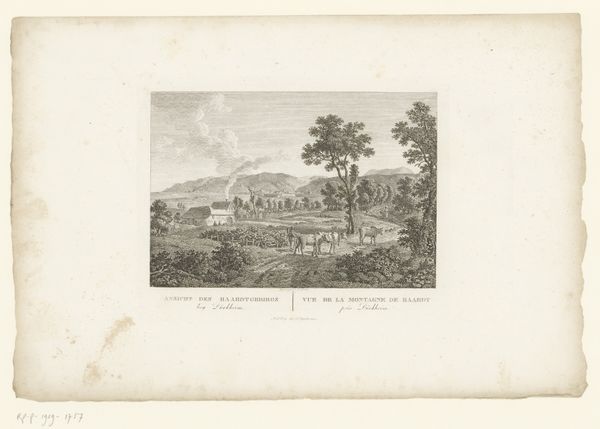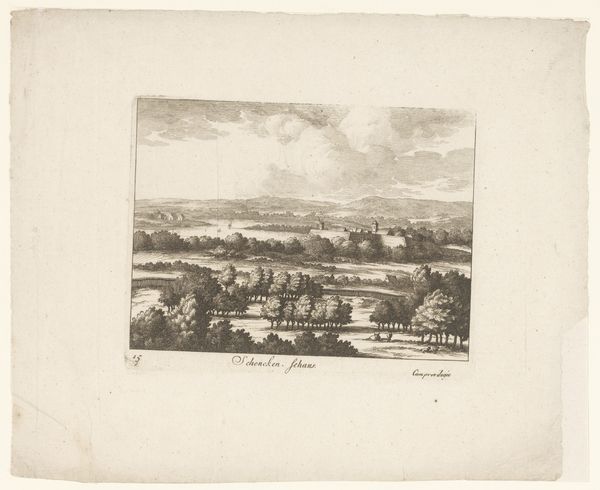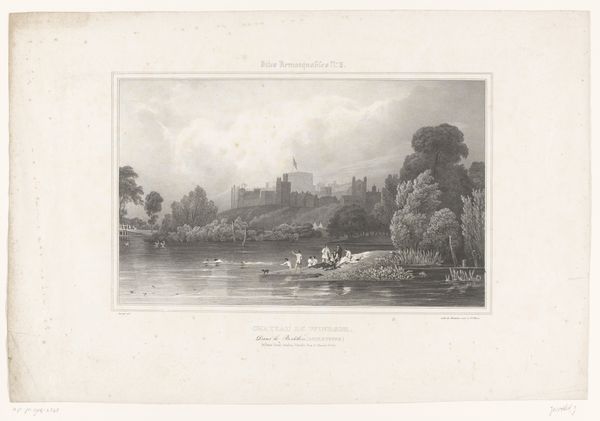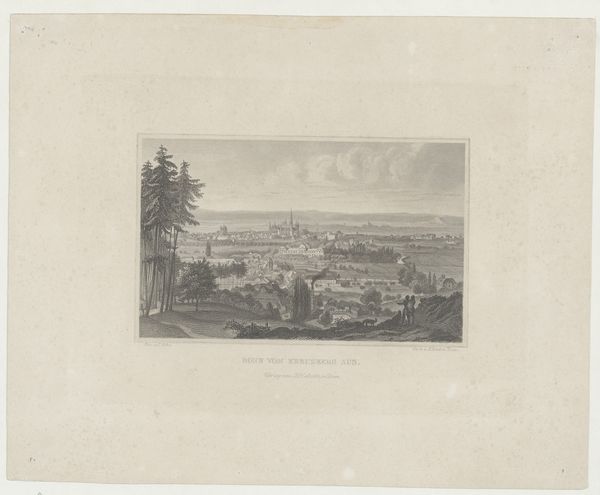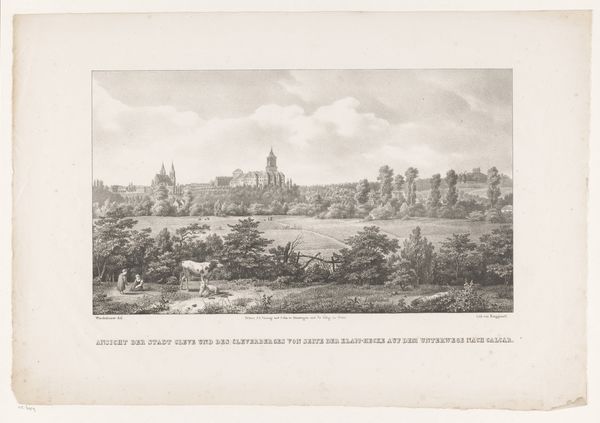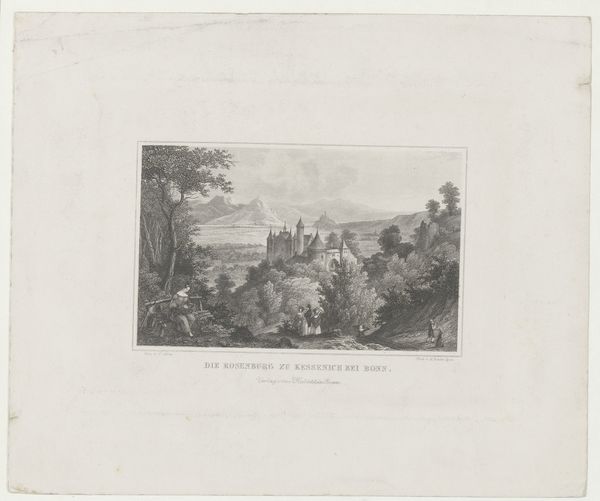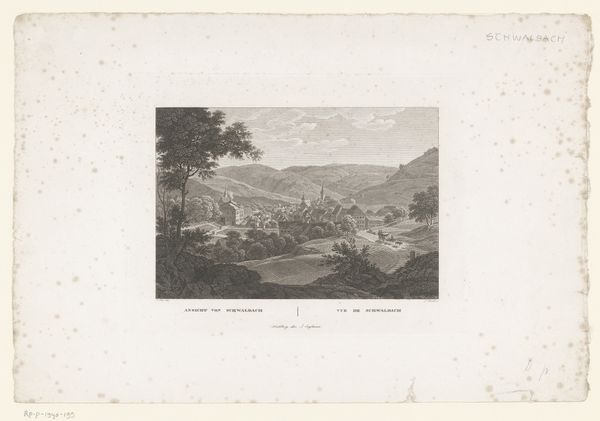
print, engraving
# print
#
landscape
#
romanticism
#
engraving
Dimensions: height 374 mm, width 552 mm
Copyright: Rijks Museum: Open Domain
Guillaume Philidor Van den Burggraaff made this vista of Kleef in the early 19th century, using the technique of lithography. This printmaking process, invented in 1796, democratized image production, relying on the chemical repulsion of oil and water. To make this work, Burggraaff would have drawn his composition with a grease-based crayon onto a flat slab of limestone. The stone was then treated with a chemical fixative, inked, and pressed onto paper, transferring the image. The fine lines and subtle tonal variations of the Gezicht op Kleef reveal the hand of the artist, but also the inherent qualities of the lithographic process. The rise of lithography coincided with the Industrial Revolution, offering a relatively inexpensive way to reproduce images for mass consumption. This print, therefore, is not just a picturesque view; it is an object deeply embedded in the social and economic transformations of its time, indicative of new industrial modes of production. Appreciating the Gezicht op Kleef requires us to consider the means by which it was made, blurring the lines between fine art and commercial production.
Comments
No comments
Be the first to comment and join the conversation on the ultimate creative platform.
